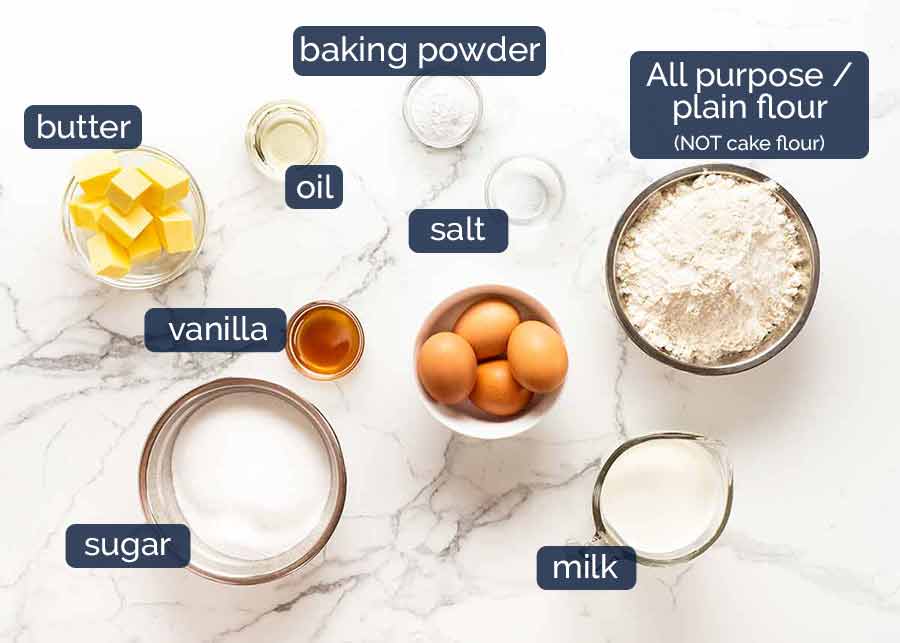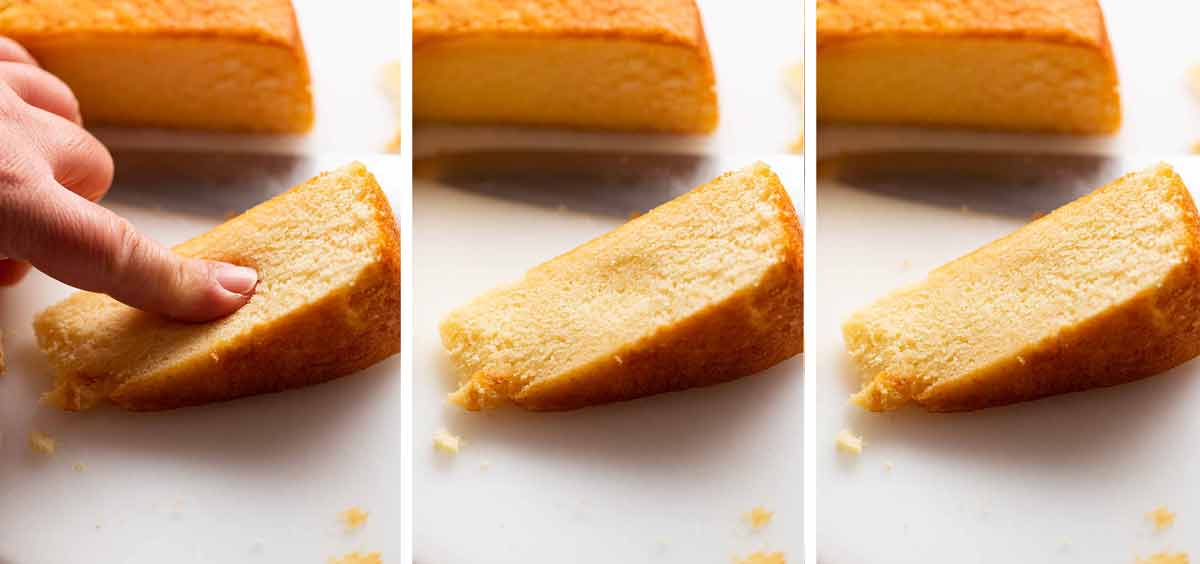The best making vanilla cake
This is my best vanilla cake recipe. A classic butter cake but with Japanese techniques applied for the most plush, soft and moist yellow cake like you’ve never had before. This professional bakery style cake stays fresh and moist for 4 days — that’s unheard of! Use the same batter for perfect Vanilla The best making vanilla cakecakes.
This is a reader favourite recipe included by popular demand in my debut cookbook “Dinner”
How to make my best Vanilla Cake
Vanilla Cake's Enduring Appeal: For centuries, vanilla cake has graced tables, its simple elegance its simple elegance a timeless crowd-pleaser. But what is it about this unassuming dessert that holds such power? This journey begins by exploring the history of vanilla cake, tracing its roots from ancient flavorings to modern masterpieces. We'll delve into the evolution of ingredients and techniques, uncovering the secrets that have transformed this humble cake into a culinary icon.
Plush, moist, fluffy crumb without being freakishly unnaturally so (as some store bought can be). No more dense cakes!
Keeps near perfectly for 4 whole days. 100% fresh on Day 1, still 96% perfect on Day 4. That’s unheard of!
Lovely vanilla and butter flavour without a greasy mouthfeel;
Even, elegant crumb – no large tunnels or irregular, crumbly holes;
Bakes perfectly flat – no levelling required!
Makes perfect cupcakes;
Not overly sweet; and
As tender as it can be but still be stable enough to make a large layered cake smothered with frosting or piles of cream and berries. In contrast, Chiffon Cakes and Japanese Sponges which, while lighter still, cannot actually hold up to much extra weight – the bottom layer gets quite squished.
Plush, moist, fluffy crumb without being freakishly unnaturally so (as some store bought can be). No more dense cakes!
Keeps near perfectly for 4 whole days. 100% fresh on Day 1, still 96% perfect on Day 4. That’s unheard of!
Lovely vanilla and butter flavour without a greasy mouthfeel;
Even, elegant crumb – no large tunnels or irregular, crumbly holes;
Bakes perfectly flat – no levelling required!
Makes perfect cupcakes;
Not overly sweet; and
As tender as it can be but still be stable enough to make a large layered cake smothered with frosting or piles of cream and berries. In contrast, Chiffon Cakes and Japanese Sponges which, while lighter still, cannot actually hold up to much extra weight – the bottom layer gets quite squished.
So if all that appeals to you too, then I dare say this might become YOUR favourite vanilla cake recipe too! And here’s a little preview to show you how soft and fluffy it still is after 4 days:
Beyond Basic: Elevate Your Vanilla Cake to Legendary Status
Unleashing Your Creativity: Once you've mastered the basics, it's time to push the boundaries! This section will ignite your inner pastry chef, offering creative ways to elevate your vanilla cake to legendary status. We'll explore flavor variations, from swirling in fruit jams to incorporating decadent frostings. You'll also discover presentation tips and techniques for transforming your cake into a showstopping centerpiece, guaranteed to leave your guests in awe.
Ingredients in my Best Vanilla Cake recipe
Here’s what you need to make this plush, soft vanilla cake. No cake flour, no buttermilk, no sour cream. Tried them all – this cake is better with plain / all purpose flour and just milk.

Plain / all purpose flour – compared to cake flour, the flavour of the butter and vanilla comes through better, the crumb is slightly more velvety AND it keeps slightly more moist too. Bonus: no need to hunt down / pay a premium for cake flour! Do not substitute with self raising flour or gluten free flour.
Eggs – whipped to aerate, these are key to make the cake extraordinarily light and fluffy. You don’t get an eggy flavour;
Baking powder – not baking soda (bi-carb), it doesn’t rise as well. This is our safety net, extra helping hand to make the cake rise.
Milk, full fat – just plain cow milk. Low fat works as well but rises marginally less. Do not substitute with non dairy milk or buttermilk;
Sugar – best to use caster / superfine sugar if you can because it dissolves better in the eggs. But regular / granulated sugar works just fine too – you may just end up with some little brown spots on the base;
Oil – just 1 tablespoon adds a noticeable hint of extra moistness, especially on Day 4, without weighing down the cake in the slightest. Don’t be tempted to add more – I tried an extra tablespoon and it didn’t rise as well;
Vanilla extract – the best you can afford. Imitation will work just fine, but the flavour isn’t as pure or real. I use Queen Vanilla Extract. Don’t waste your money on vanilla beans or vanilla bean paste – it’s not worth it for cakes.
Origins of this vanilla cake
Vanilla Cake's Enduring Appeal : For centuries, vanilla cake has graced tables, its simple elegance a timeless crowd-pleaser. But what is it about this unassuming dessert that holds such power? This journey begins by exploring the history of vanilla cake, tracing its roots from ancient flavorings to modern masterpieces.flavorings to modern masterpieces.
A Spicy Predecessor : Vanilla's story starts long before frosted layers. The Aztecs and Mayans cultivated vanilla beans for their aromatic and flavorful qualities, using them to enhance chocolate drinks. It wasn't until the 16th century that Spanish conquistadors brought vanilla to Europe, where it became a prized ingredient for the wealthy.
Vanilla Cake Nirvana: Achieve Baking Bliss with These Simple Steps
Mastering the Fundamentals: The path to vanilla cake nirvana is paved with a solid foundation. Here, we'll break down the essential steps for baking a flawless cake. From gathering the right ingredients to understanding the science behind each step, you'll gain the confidence to tackle any vanilla cake recipe.
From Humble Beginnings to Heavenly Layers : Early vanilla cake recipes, emerging in the 18th century, were often paired with other flavors like chocolate or fruit due to vanilla's scarcity and expense. As vanilla became more accessible, bakers began to focus on highlighting its pure, delicate flavor, resulting in the light and airy cakes we know and love today.
Different cake pan sizes and bake times
Click here for a handy table of different cake pan sizes, bake times and cake height. This Vanilla cake will work with the following cake pan sizes:
- 2 x 20cm / 8″ cake pan – my base recipe (I like the cake height, slightly tall), 30 minutes
- 3 x 20cm / 8″ cake pan – 21 minutes (if all one one shelf). Otherwise, put 2 on middle shelf and 1 pan on shelf underneath. Bake top 2 pans for 21 minutes, remove from oven. Move bottom pan up and bake for another 2 minutes then remove.
- 2 x 23 cm / 9″ cake pans – 27 minutes
- 2 x 15.25cm / 6″ cake pans – 25 – 27 minutes, only make half a batch
- Halve the recipe for a single round cake, 20 – 23cm / 8 – 9″
- 12 cup tube pan or bundt pan (grease & dust with flour) – bake 1 hour, but note cake is not quite as fluffy as pictured and described. Still soft, but it’s slightly more dense (still delicious and thoroughly enjoyable, just different to intended)
- 23 x 33 cm / 13 x 9″ rectangle pan – 30 minutes (large single layer sheet cake, excellent for large groups)
- CUPCAKES! 24 perfectly domed, golden cupcakes – or halve the recipe to make 12.
Day 4 – still super moist and fresh
The photos below are my attempt to show you how incredibly soft the cake still is four days after it’s made! If it were dry like typical butter cakes that start with “cream butter and sugar until fluffy”, the crumb would break when I jabbed it, and it would never spring back.

Tips for Vanilla Cake success
You’ll love that this list is a lot less stern than many other cake recipes!
Eggs at room temperature – these will fluff better and faster. It’s easy to warm up fridge cold eggs – just leave in warm water for 5 minutes. What’s a room temperature egg? Pick up the egg. Fridge cold? Too cold. Cool but not cold? That’s ok. Very warm? I would be worried they might be off! (Note: fridge cold eggs will still fluff just fine, but it takes a couple of minutes longer. Just more consistent results with room temp eggs).
De-chill icy cold mixing bowls – Cold kitchen? Cold bowls! Run them under warm tap water then dry before using. Not hot tap water – just warm. Why? Eggs aerate faster and better when slightly warm. Cold bowl will lower temperature of eggs. This is a general useful baking tip – eg softened butter creamed in an icy cold bowl will make it firm up.
Make sure your baking powder is still good – if you do everything right and the batter looks like it does in my video, but your cupcakes don’t rise, the culprit is probably your baking powder. Even if it’s not past the expiry date, if not stored in a cool dry place, or if “someone” left the lid off for days, it can lose rising power. See here for how to check if your baking powder is still good.
Make sure the milk and butter are hot when you mix in the batter. I don’t understand the science, all I know is that when I melted the butter in the milk ahead of starting the batter, then let it cool to lukewarm while I faffed around getting everything else ready, the cake didn’t rise as well.
Once you start, don’t stop – once you start beating the eggs, keep going until the cake is in the oven. Do not at any point stop and take a call from your chatty Aunt Margorie! Reason: bubbles in batter will subside if left sitting around, resulting in a dense cake.
Follow steps in the order per recipe – I’ve written out the steps very specifically in the most efficient order for the best result. Don’t try to do things ahead like melting the butter in hot milk then leave it sitting around while you do everything else – it will either cool (cake doesn’t rise as well) or it gets a skin on it (this doesn’t dissolve in batter).
Cake pan WITHOUT loose base is best – the batter is quite thin so it can leak a bit if using springform pan or loose base sandwich pans. Not much, but a bit. Not the end of the world – you can prevent this by greasing the base extra well and “plugging “plugging” the gap with butter.
Recipe can be halved for one single layer cake, baked in one pan. However if you do make a full batch, do not try to bake all batter in one pan or it won’t rise as well. Only exception is bundt pan – the hole in the middle helps with faster heat distribution.










0 Comments